LIVING MANIFOLDS
– Term 2 Thesis Research –
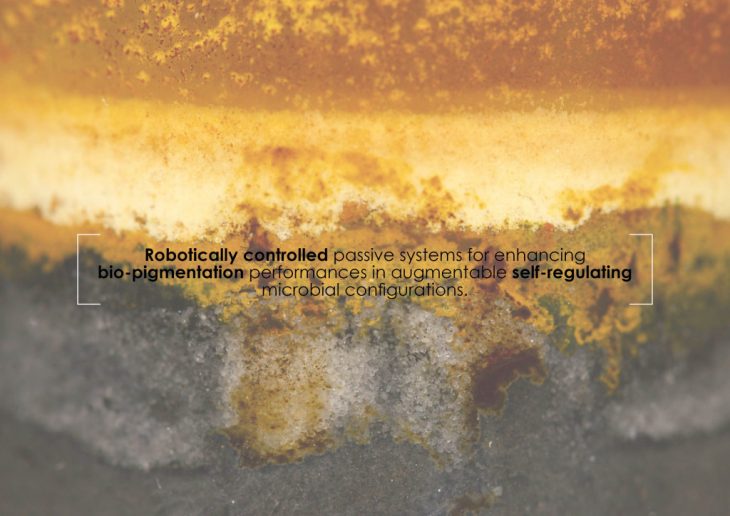
The evolutionary process in microbial systems is generated by continuous growth and merged matter conversion, resulting in metabolically diverse bacterial cultures. Contemporary bio-technologies and bio-inspired architecture proposes the implementation of segregated bacterial cultures in the engineering of smart materials for buildings that adapt and respond to environmental factors.
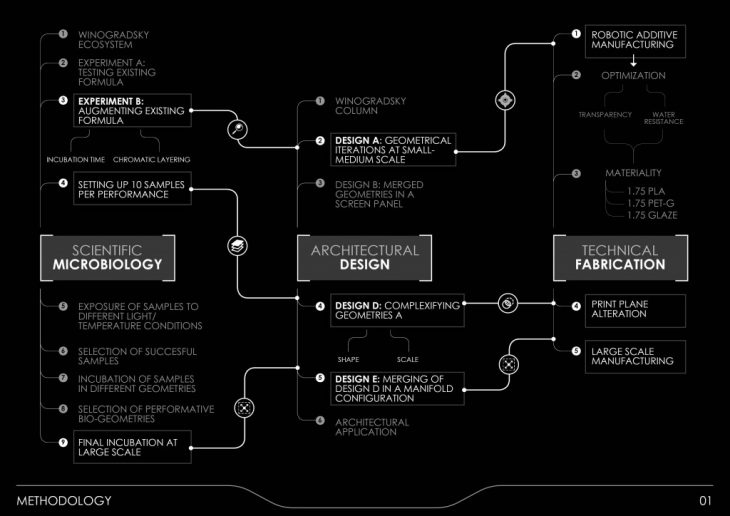
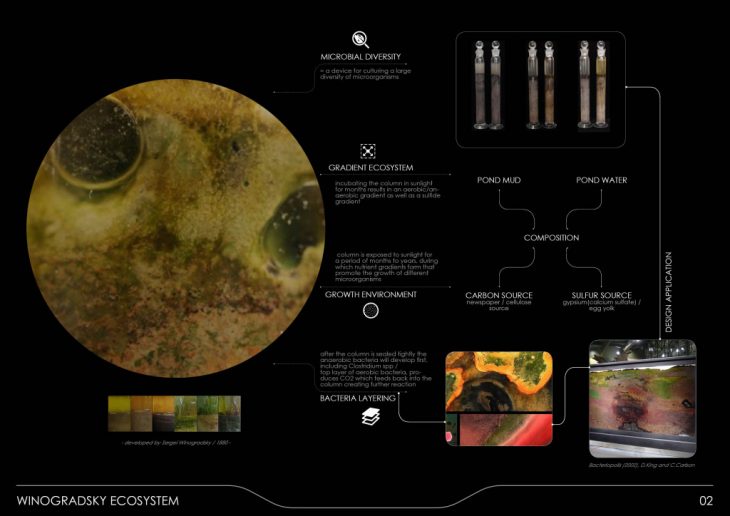
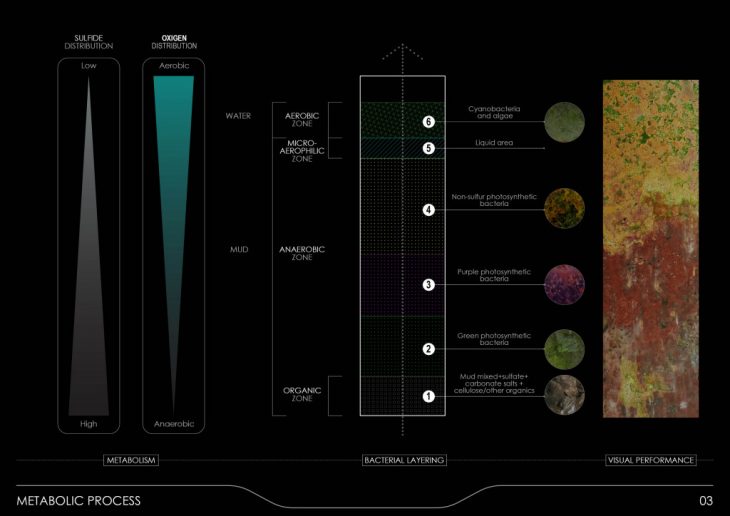
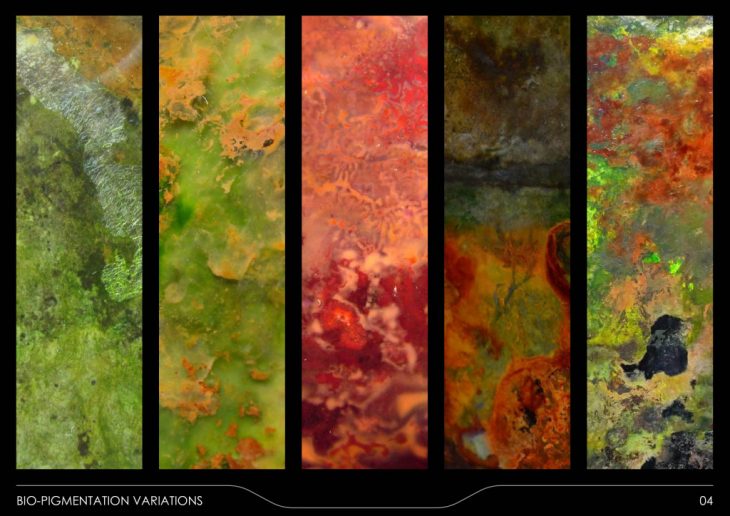
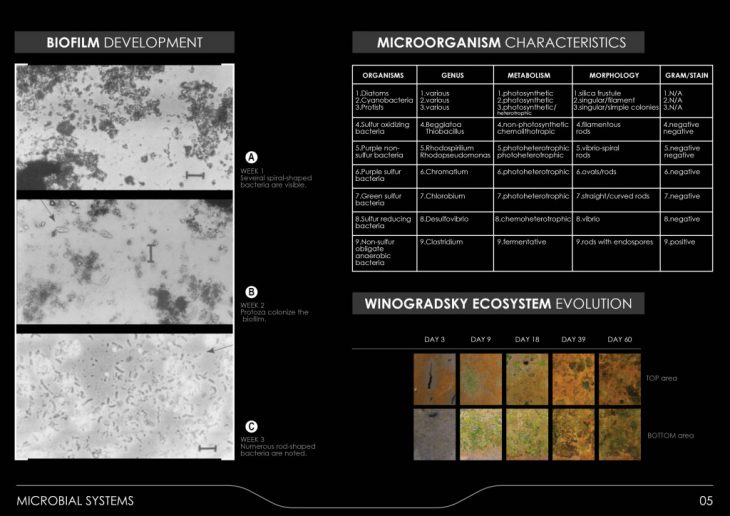
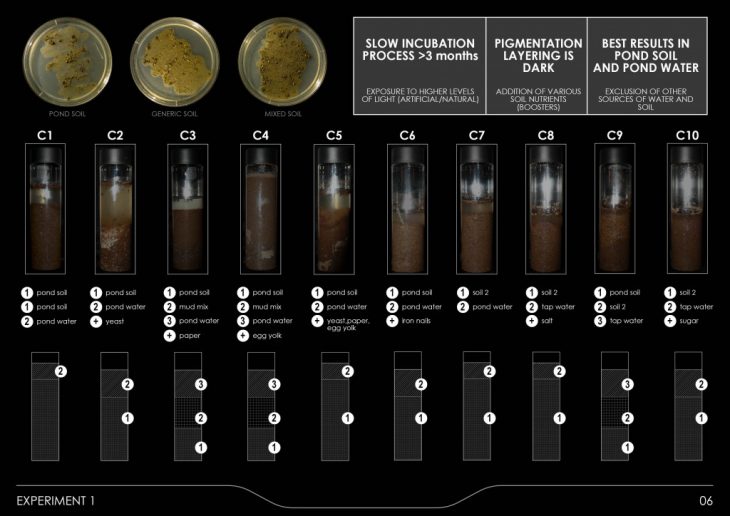 Despite this progress, microorganisms work radically different when isolated and transferred within construction and design practices, often resulting in unscalable and non-performative systems after exposure to an outdoor environment that cannot be biologically controlled. The lack of associated bacterial support leads to an inconsistent metabolic cycle with a short-lifespan due to a descending evolutionary growth. The project puts forward an integrated bacterial incubation system, based on the Winogradsky experiment, for generating large-scale bio-pigmented microbial environments with a continuous and self-regulating lifespan when adapted into an architectural context.
Despite this progress, microorganisms work radically different when isolated and transferred within construction and design practices, often resulting in unscalable and non-performative systems after exposure to an outdoor environment that cannot be biologically controlled. The lack of associated bacterial support leads to an inconsistent metabolic cycle with a short-lifespan due to a descending evolutionary growth. The project puts forward an integrated bacterial incubation system, based on the Winogradsky experiment, for generating large-scale bio-pigmented microbial environments with a continuous and self-regulating lifespan when adapted into an architectural context.
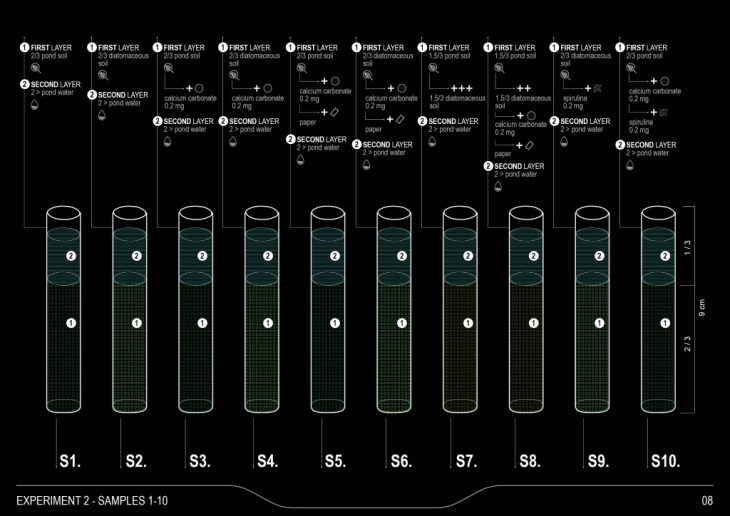
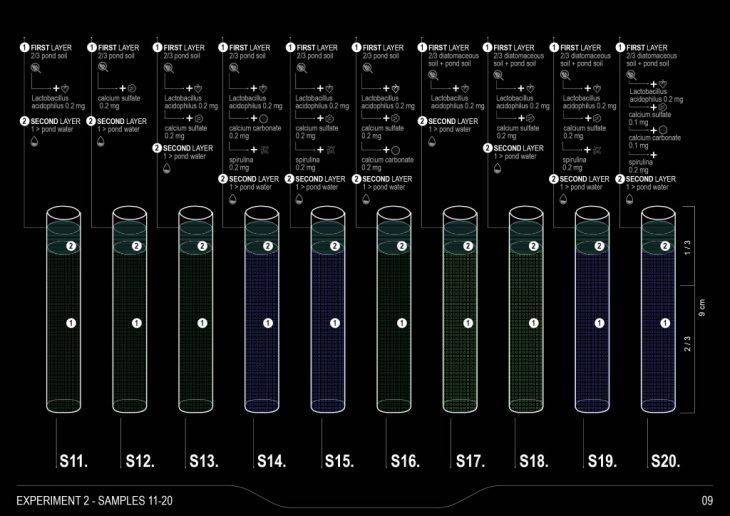
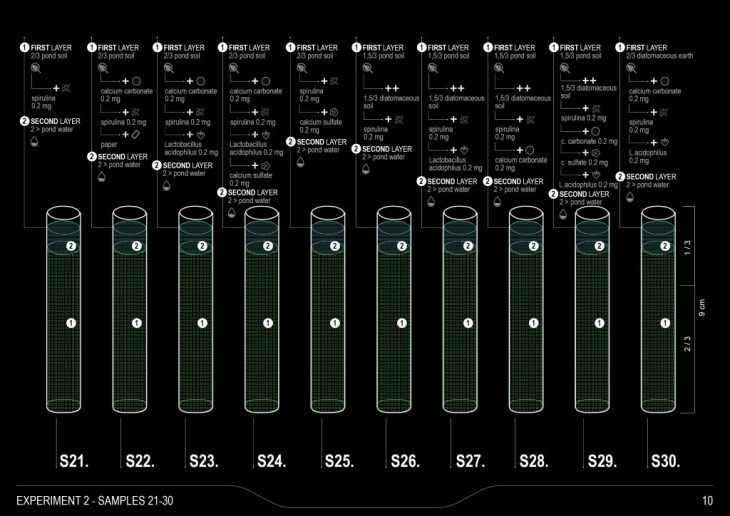
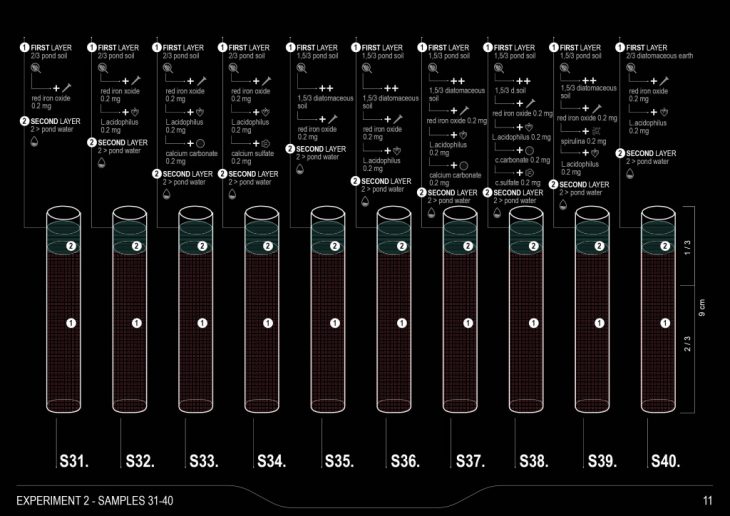
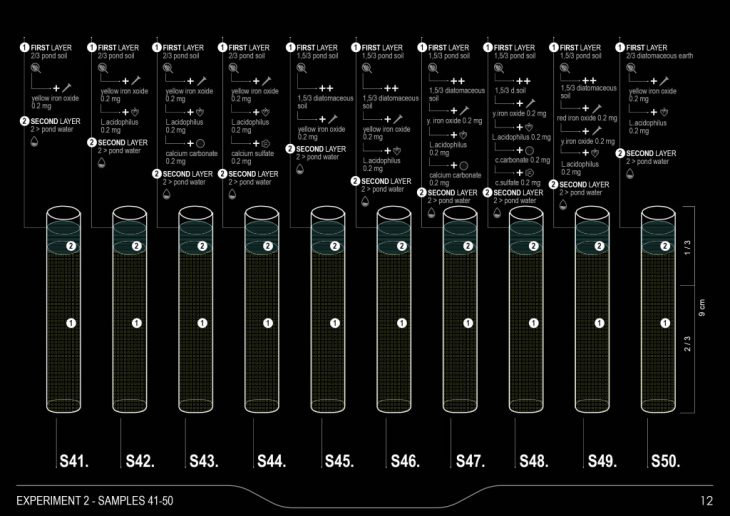
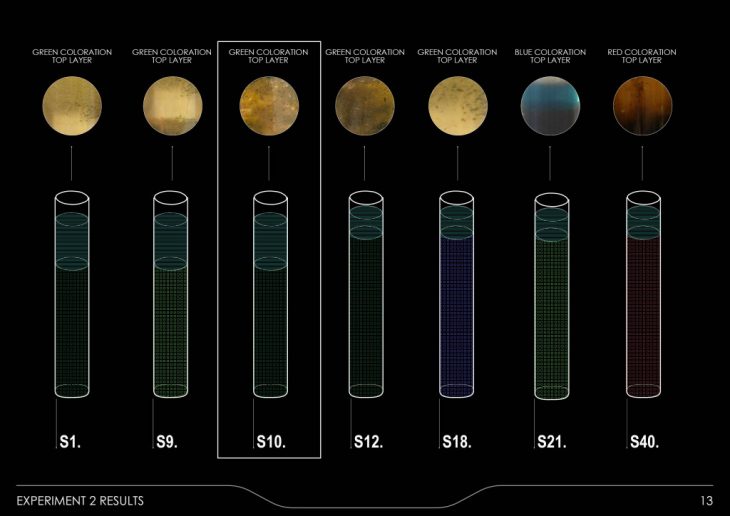
The biological configuration is based on bacterial augmentation with nutritive addition for incubation time optimization and live bacterial cultures incorporation for gradient pigmentation enhancement. The design of the manifolds is controlled through robotic additive manufacturing using plastic based biodegradable filaments for water-resistant and translucent volumes, incubated with the help of an automated syringe robotic tool. Light and temperature levels influence the density of specific microbial cultures, generating environmentally based gradients with diverse, yet connected metabolic features.
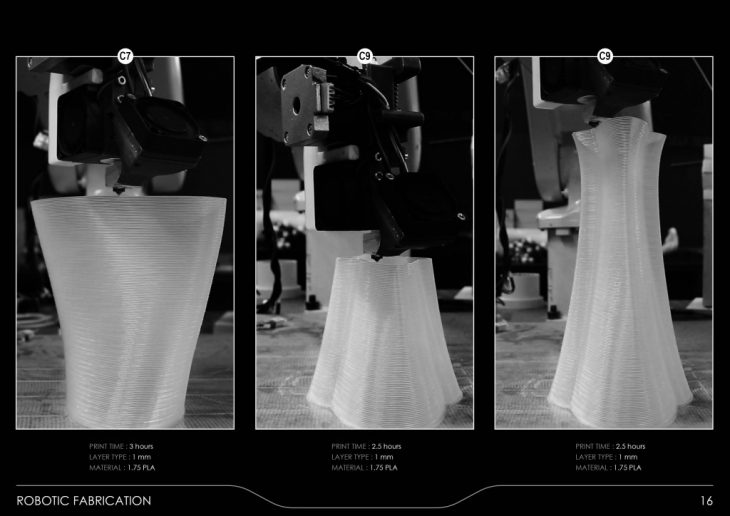

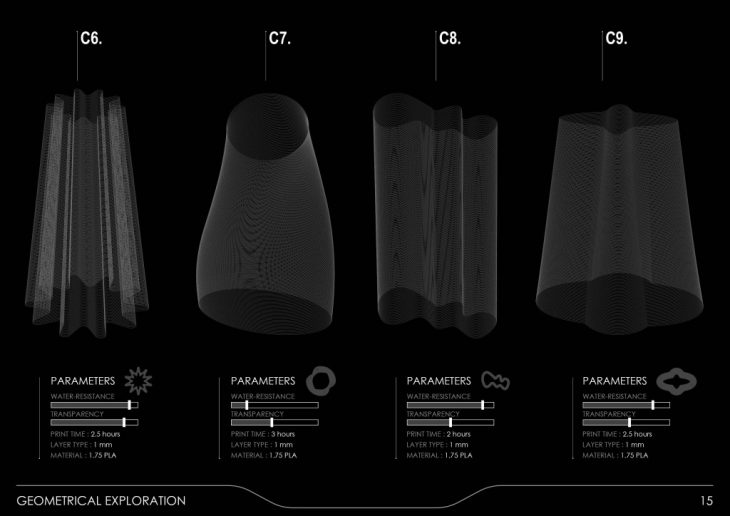
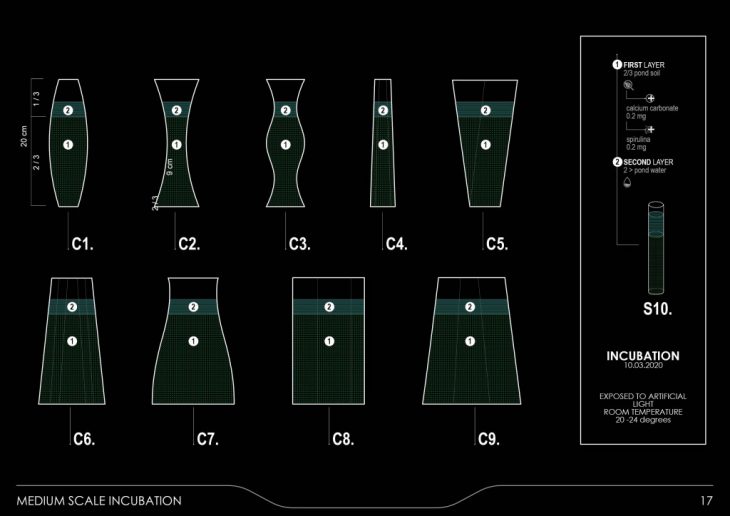
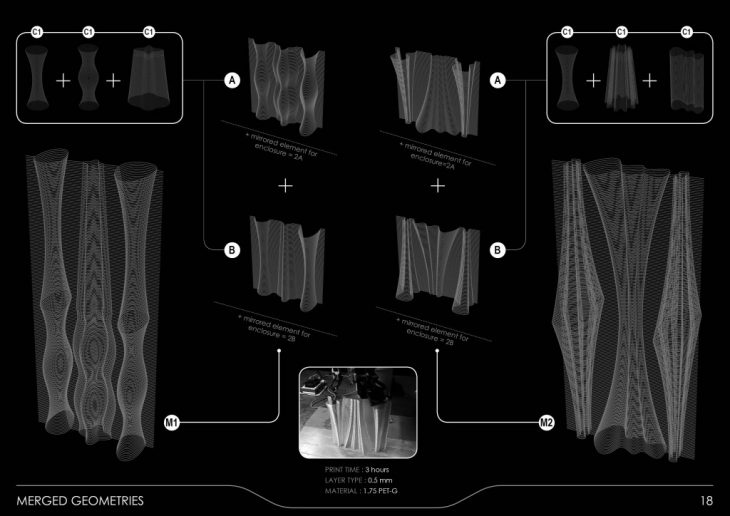
 The results lead to a computational process that creates digital growth simulations for identifying main pigmentation areas and implementing a shape based design that highlights these areas, without disrupting the continuous evolutionary cycle. Bio-pigmentation diversity designates the presence of various bacterial communities that react to light, generate oxygen, break apart water and fix carbon, therefore indicating performative behaviors for environmental utilization.
The results lead to a computational process that creates digital growth simulations for identifying main pigmentation areas and implementing a shape based design that highlights these areas, without disrupting the continuous evolutionary cycle. Bio-pigmentation diversity designates the presence of various bacterial communities that react to light, generate oxygen, break apart water and fix carbon, therefore indicating performative behaviors for environmental utilization.
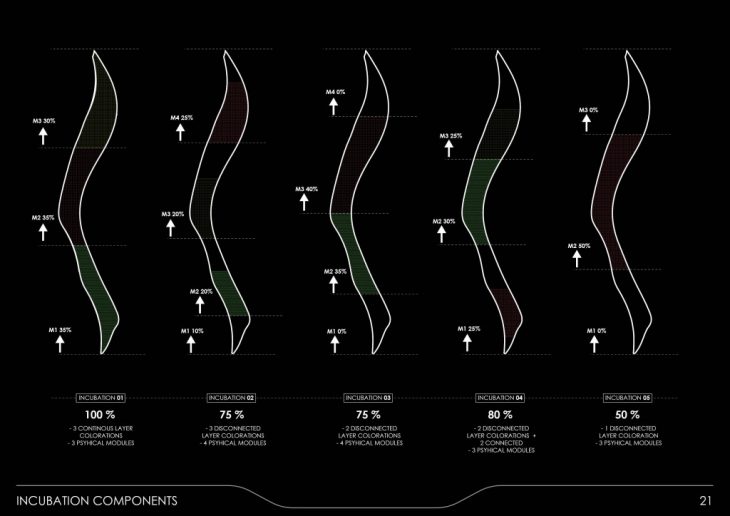
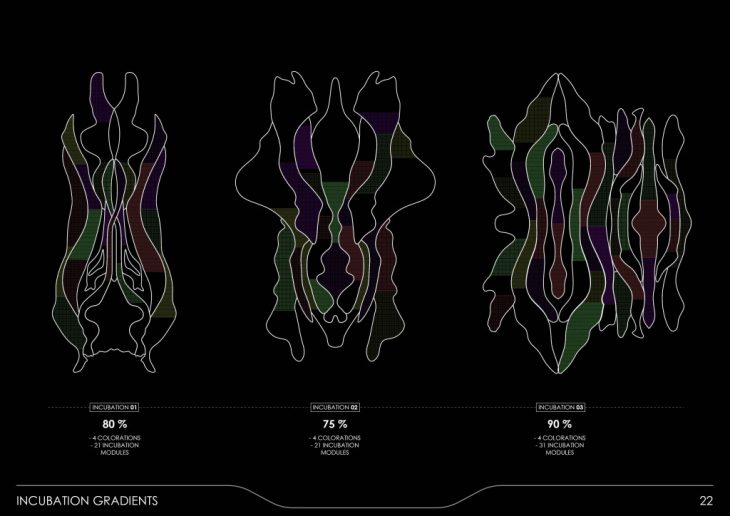
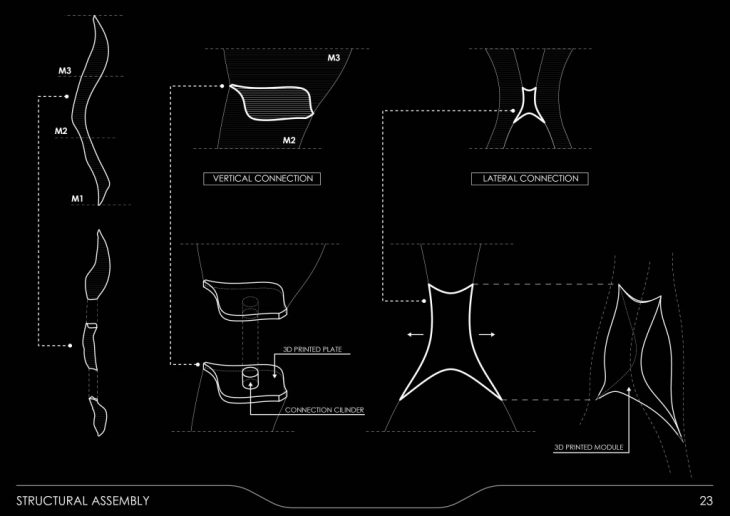
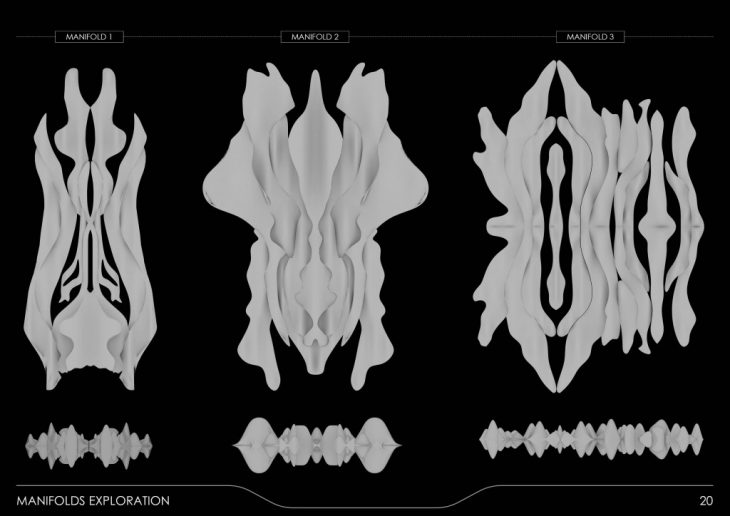
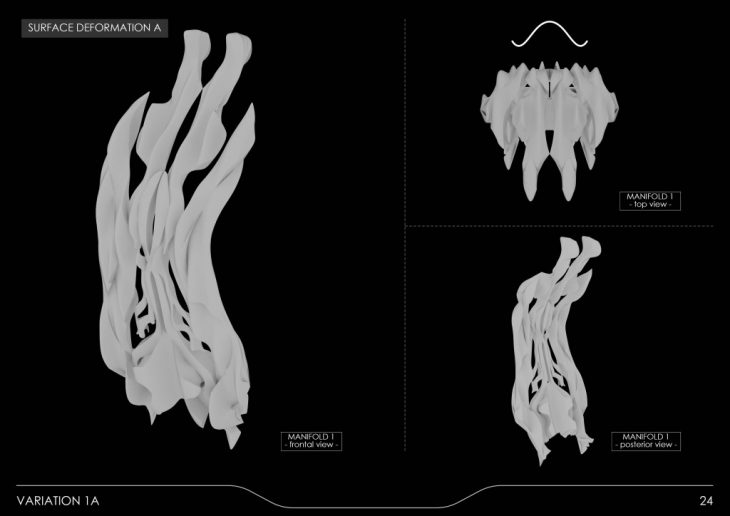
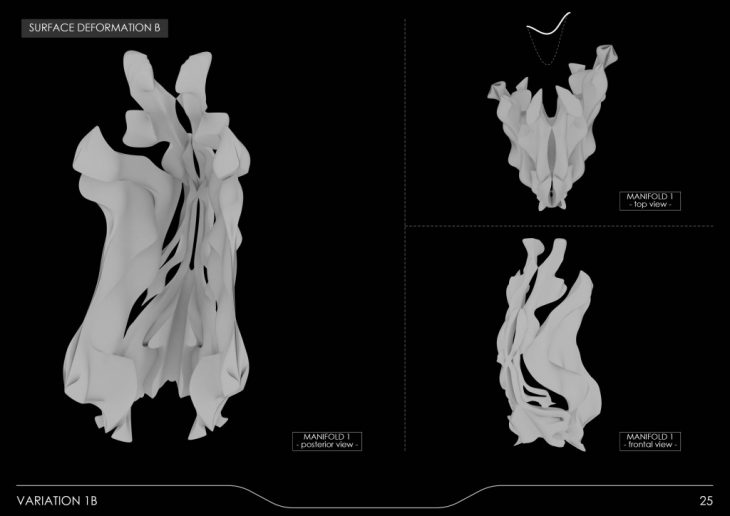
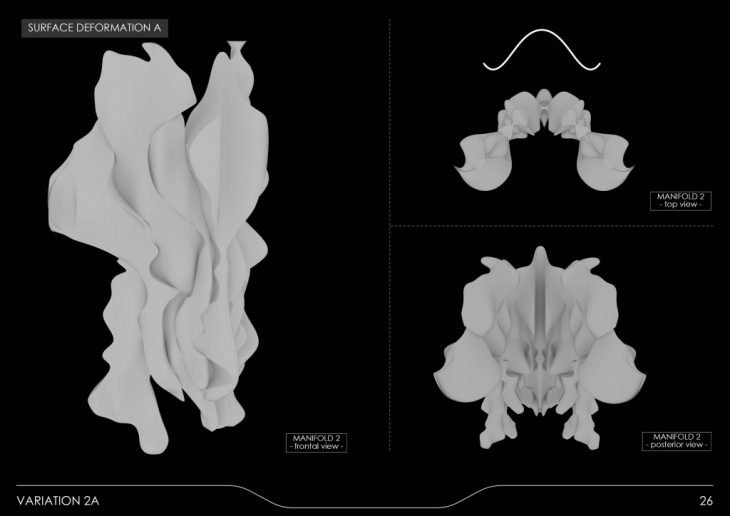
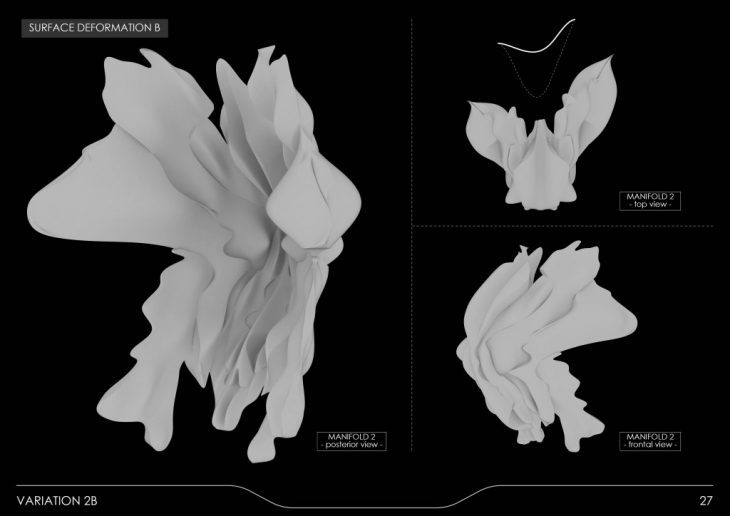
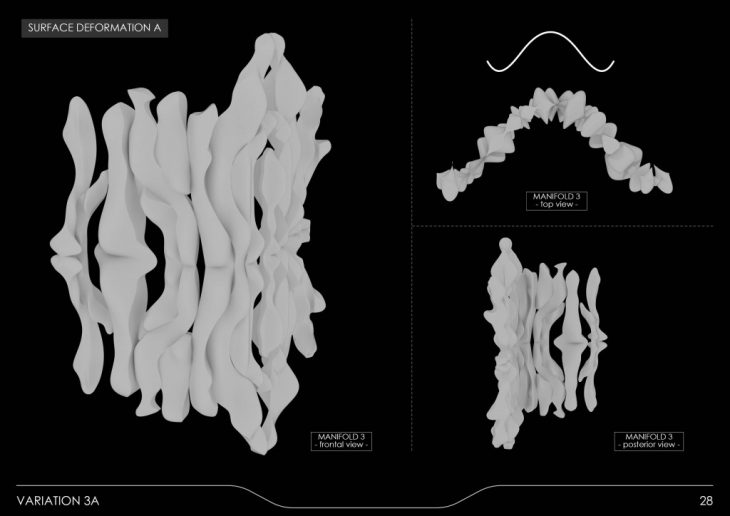
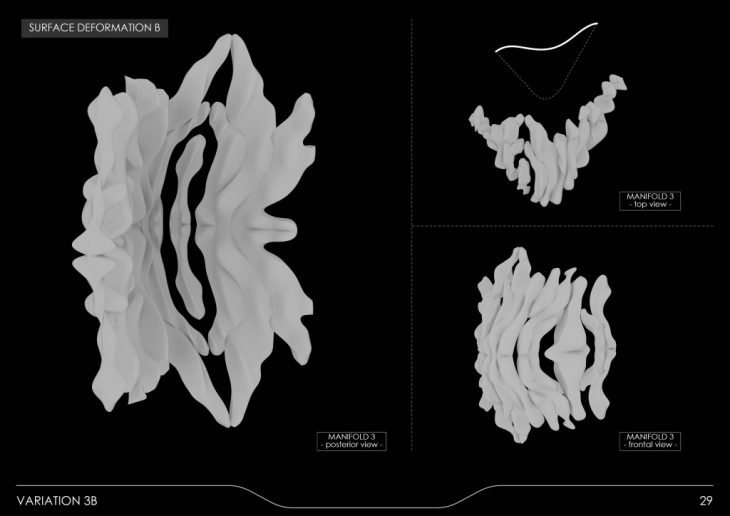
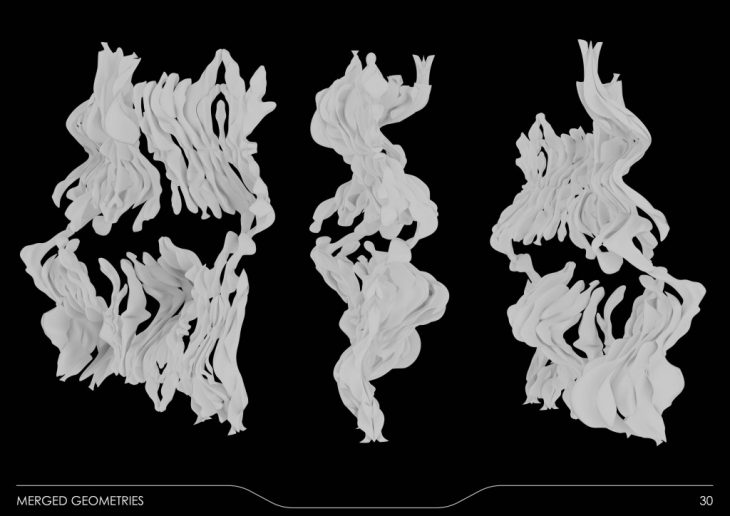
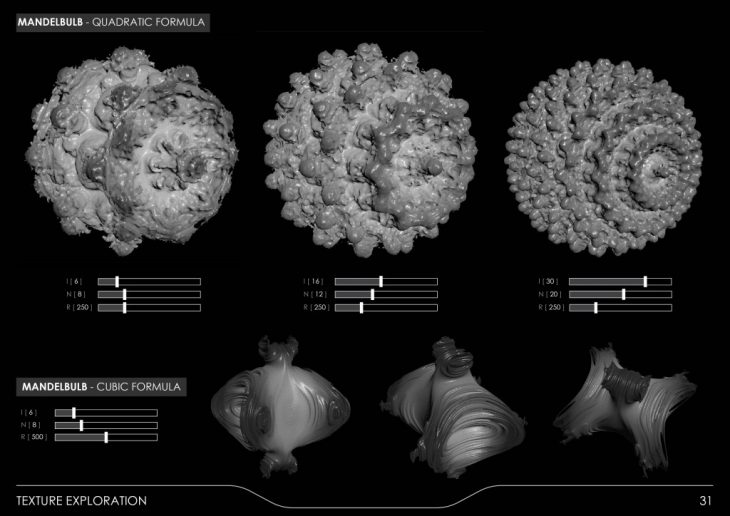
With a linked and adaptive growth organization, the microbial systems become large-scale organisms that define a perpetual architectural model that can be further utilized as a resource generator or energy source within the urgent context of sustainable and self-sufficient buildings and design technologies.
KEYWORDS: self-regulating systems, microbial diversity, robotic additive manufacture, bio-pigmentation, bacterial augmentation
LIVING MANIFOLDS is a project developed at IaaC, Institute for Advanced Architecture of Catalonia, developed at Master in Advanced Architecture 2019/20 by:
Student: Daria Ciobanu-Enescu
Faculty: Marcos Cruz, Kunal Chadha